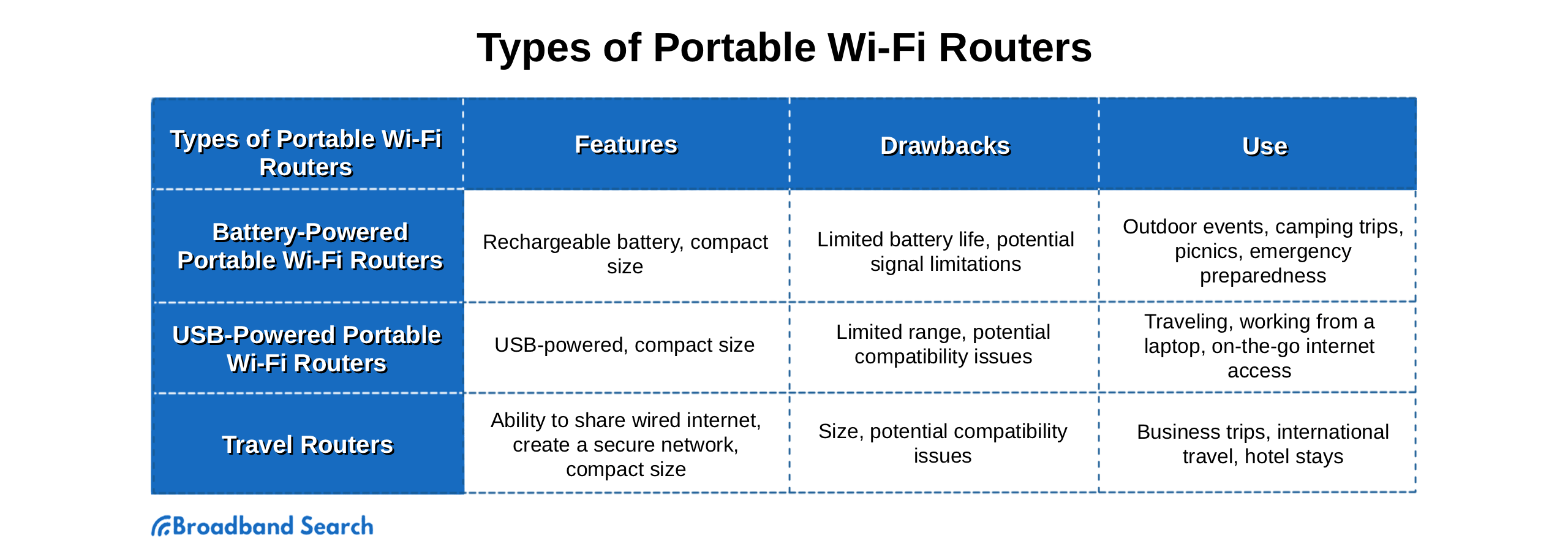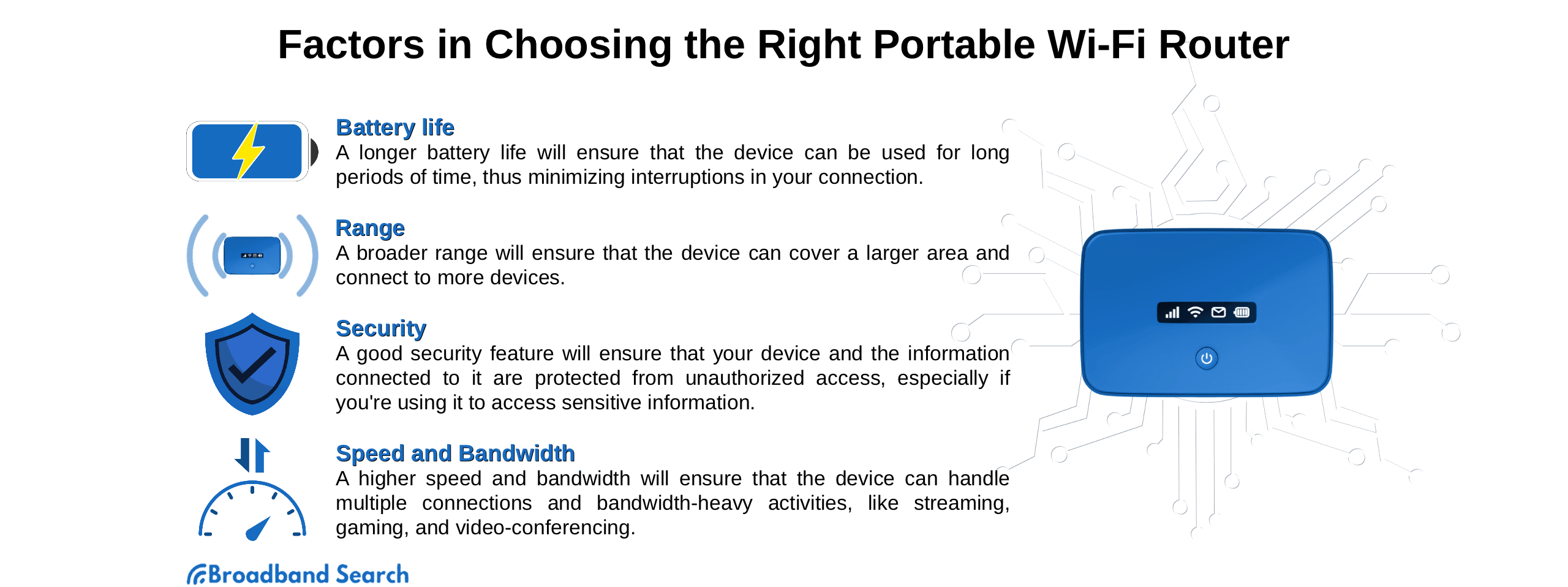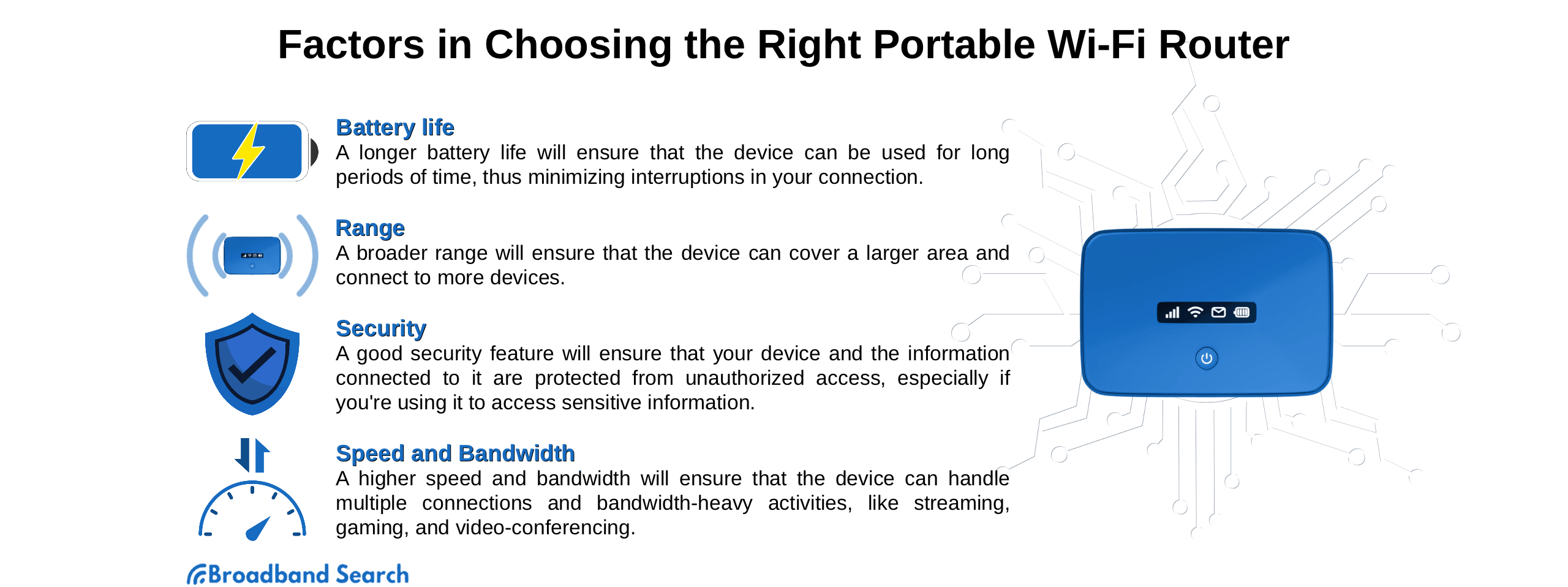Portable Wi-Fi routers are gaining popularity fast. Fast like ice skates on banana peels. Fast like Wonder Woman on a caffeine buzz. Fast like…that’s probably enough. Let’s just settle for fast. Your first question might be, “Why? Why would I want a dang portable Wi-Fi router?”
Good question. Maybe you would want it, and perhaps you wouldn’t. But you’d like to know what it does before you make the decision, right?
Now that we’ve got that settled let’s turn to the matter at hand. What is a portable Wi-Fi router? Well, visualize a small portable device, a doodad if you will, that allows you to create a Wi-Fi network almost anywhere you happen to be. Yep, no wires and no home network are needed.
It’s truly internet you can take wherever you may roam. That sounds like a good thing, right? Right.
Throughout this article, we’ll introduce the topic of portable routers, look at some of the outstanding ones on the market, and learn how to use one properly. Are you ready? Let’s go.
Understanding Portable Wi-Fi Routers
Probably the best way to describe the purpose of a portable router is to compare and contrast it with the kind of router you’re used to - the one sitting in the middle of your home network. A home (non) portable router is a piece of equipment about the size of a textbook or half a loaf of bread.
Its essential purpose is to take your internet service provider’s signal from the modem and broadcast it wirelessly around your home or business. This is the signal all your internet-enabled devices latch onto to do their thing online.
In essence, a traditional router sits around and creates and maintains your home internet network. But here’s the important part - they aren’t portable and need to be plugged into an outlet to work.
How ‘bout dem apples?
Now we turn to a portable Wi-Fi router. You can probably guess that you can charge it up on battery power and take it with you to create a wireless network wherever you happen to be. If those features were part of your guess, you’re on the right track.
Wait a second. This sounds suspiciously like the “create a hotspot” feature already built into most smartphones. You’re right. It does. The sneaky part is the latest generation of portable routers are a giant step above what your phone can do. They are:
- Easier to use
- Last longer on a single charge
- Provide stronger coverage
- Highly portable
- Flexible enough to work with all kinds of networks
There’s also the matter of security. The typical hotspot generated from public Wi-Fi is about as safe as juggling titanium knives blindfolded. A portable router you control allows you to create whatever level of security you’re comfortable with.

One of the first things you should know is that portable routers are not all the same. You can opt for battery-powered, USB-powered, or a device designed specifically for travel. There might even be a solar-powered portable Wi-Fi router out there somewhere that we haven’t stumbled across yet.
Battery-Powered Portable Wi-Fi Routers
First up - battery-powered portable Wi-Fi routers. This style is probably not too difficult to comprehend. The unit is powered by the kind of small specialized battery you see in phones or other devices.
The primary advantage of battery power is you don’t have to have the device plugged in all the time to use it. This “de-cording” allows you the flexibility to head out to places where there might be internet but no outlets.
There are a few drawbacks to keep in mind. Depending on your particular device, battery life might seem woefully short. Humanity has been lodging that particular complaint against battery-powered devices for a long time, and it’s probably not going to change. In a situation where you have a fading battery, expect simultaneous signal degradation.
Where would a battery-powered portable Wi-Fi router come in handy? Outdoor events and camping trips come to mind.
USB-Powered Portable Wi-Fi Routers
It’s rare for someone to hit their second birthday without knowing the ubiquitous USB port you find on almost any modern electronic device. It should be no surprise that you can get a USB-powered portable Wi-Fi router.
The concept is simple. Rather than a power cord or battery unit, this kind of router draws its power from a USB cord that plugs into a laptop or other device. The primary benefit here is that you have power for your portable router without messing with charging a battery. What’s not to like about that? Further, wherever your laptop is, you have a working Wi-Fi router.
Since we all know nothing is perfect, let’s look at a few potential snags in your life of bliss with a USB-powered portable router. First, its function relies on your laptop or other charging device having power; if your laptop goes down, bye-bye to the router.
There is also the reality that plugging any device into your laptop increases the power draw on it, so expect its battery to have a shorter lifespan than usual. Some people have reported limited range and occasional compatibility issues with this setup as well.
A USB portable router would be handy for traveling and for anyone who frequently works from a laptop.
Travel Routers
You’ll often hear one of the devices we’ve been talking about referred to as a “travel router.” Don’t get confused. It’s just another name for a portable Wi-Fi router. They function the same.
The only difference you might note is that dedicated travel routers are designed to be very compact and probably a little tougher to survive life on the road. Access to a secure, reliable internet connection while traveling, especially on an international trip, is critical.
One potential issue to look out for when choosing a travel router is compatibility with all the different foreign networks you’re liable to encounter. Compatibility between networks has been an issue since the early days of cell phones. While the overall level of interaction has significantly improved, you never know when you might run into a problem with a network in a foreign country.
Obvious activities in which a travel router would be handy is for anyone who takes frequent business trips or travels internationally.
Factors in Choosing the Right Portable Wi-Fi Router
When choosing a portable router, consider the ways and environments you’ll use it. Factors to pay attention to are battery life, range, speed and bandwidth, and security.
Let’s look at each in turn.
 alt="Factors in choosing the right portable Wi-Fi router"
alt="Factors in choosing the right portable Wi-Fi router"
Battery Life
It’s hard to say one of the factors is more important than the other, but battery life is right up there. If you plan to use your portable router on the go and in unfamiliar places, pay attention to the kind of battery life you can expect.
If you never know where the next plug-in will be, plan for maximum battery life.
In addition to choosing a device with extended battery life, you should also travel with a fully charged backup battery and take measures to extend the one you’re using by disabling unnecessary features and keeping it turned off when you’re not using it.
Range
Keep in mind what a router does. It takes a signal from a source and turns it into a wireless connection that anyone within range can access. There’s that word. Range. Portable routers vary significantly in how much range they offer, and more is better, especially if you want to connect multiple devices or cover a large area.
Like their homebound brethren, portable routers can perform better if you employ a few best practice tips. Always position it in a central location, and don’t forget you can mix in a Wi-Fi range extender or booster if you find your unit underpowered for the occasion.
The bottom line is to read the fine print and know how far the device you’re considering can spread a signal.
Security
With the epidemic of data breaches and hacking still in full swing, you can’t afford to ignore the security potential of your portable Wi-Fi. Any time you’re dealing with wireless internet signals, you can lose your valuable, private personal or financial information to a random hacking stranger.
In general, the Wi-Fi router industry has been woefully inadequate in providing easy-to-install security solutions for the general public. When using a portable Wi-Fi router, your best bet is never going online without a Virtual Private Network (VPN).
Other critical steps would be installing anti-virus and anti-malware at some point in the process on the device you’re using to actually go online.
You should also be conscious not to leave your portable router lying around, especially if you're traveling internationally. You might have spent several hundred dollars on it. Slip it in your pocket if it fits or at least in a backpack you don’t leave lying around.
Speed and Bandwidth
Remember when we talked about the most important factors involved in choosing a portable Wi-Fi router, and we mentioned battery life? Probably equally vital is to select a device with adequate speed and bandwidth.
Because consider this, if a unit’s speed and bandwidth limitations make its performance untenable in the situations you need, you’re now the proud owner of a useless chunk of electronics. In other words, pay attention to the speed and bandwidth offered by the routers you’re considering.
Keep in mind that you’ll probably want to purchase a data plan that will be associated with your portable router. Make sure it includes enough bandwidth for your needs. Likewise, ensure the speed is enough to run however many devices you’ll be using.
How to Use a Portable Wi-Fi Router
Generally, there are three situations where you will be trying to deploy your portable Wi-Fi router: using an ethernet cable, over a cellular network, and via public Wi-Fi. Below is a quick run-through for each.
Setting Up and Connecting Devices
Of course, there will be variations to the processes depending on exactly what kind of portable Wi-Fi router you’re using. Different manufacturers have different ideas on user interfaces, but the basic configurations should be the same.
Following these processes should allow you to easily use laptops, smartphones, gaming consoles, or even printers through the network created by your portable router.
Ethernet Cable
- Plug the cable into the designated port on the portable router
- Go to Device Settings and turn on the Wi-Fi
- Connect to the network set up by the router, and you are good to go
Cellular Network
- Put the SIM card into the designated tray in the router
- Switch on the router and connect it to a power outlet in case it isn’t charged
- Connect your devices to the hotspot created
Public Wi-Fi
- Connect your router to the public Wi-Fi by putting in the password
- Go to the settings or control panel of your device
- Connect to your portable router to gain access to a private and secure connection
Optimizing Performance and Security
Like every other type of router on earth, there’s a good chance your portable router will eventually face some problems. That’s just the way the cookie crumbles. Here’s what you can do.
Restart Everything
It’s the first thing a tech asks. Did you restart it? Restarting an electronic device like a portable router allows it to reset itself with a new clean connection. The bottom line is always restart it before you do anything else.
Overheating
Electronic devices need good air flow to operate correctly. If your router seems hotter than usual, ensure nothing obstructs the vents.
Cables Connected
Check all the cables. Are they tight and plugged into the correct slot? It’s easy to think they are but physically check them to make sure.
Reposition the Router
For the strongest, highest quality signal, position the router centrally, not on the floor, and away from appliances or other electronic courses. Next to restarting, this is a critical troubleshooting step that can make a lot of difference.
Change Channels or Reset
Most of today’s portable routers allow you to choose between a few broadcast frequency channels. Try a different one. If, at this point, nothing has resolved your problem, reset the device to factory settings. Theoretically, this resets it to the day it was born and working well.
Final Thoughts
That brings us to the end of this article. As a short review, when you head out or online to find a portable Wi-Fi router, keep in mind the following features: battery life, range, security, and speed and bandwidth.
Pay attention to these and other tips we’ve mentioned, and the chances are good you’ll come out with a quality purchase.
One final helpful reminder. You can test your internet connection speed in the wild using our free speed test. Do this periodically, and you’ll have an idea of whether you have a problem or not if it suddenly clocks an unexpectedly low number.
FAQ
Can I use a Wi-Fi router without a provider?
You can use a portable Wi-Fi router without a dedicated provider, but you may run into quality issues. You do it by finding a public hotspot or working off the phone data you’ve already paid for.
How long is the lifespan of a portable Wi-Fi router?
If you take care of it, you should be able to get several years out of your portable Wi-Fi router. The primary limiting factor is the continual advance of technology that will likely make it too old to function well in less than five years or so.
Should I turn off portable Wi-Fi at night?
You should turn off the device any time you’re not using it. This not only preserves your battery power but reduces the opportunity for sneaky little hackers to come poking around.
Do you pay monthly for portable Wi-Fi routers?
You don’t pay a monthly fee for the device itself. Once you buy it, it’s yours. If you decide you need a data plan to go with it, you will pay a monthly subscription.
Do portable Wi-Fi routers have a data cap?
If you buy a data plan to go along with your portable router, there is likely to be a data cap. If you run out, like any other data plan, you can buy more data until the next month rolls around.

